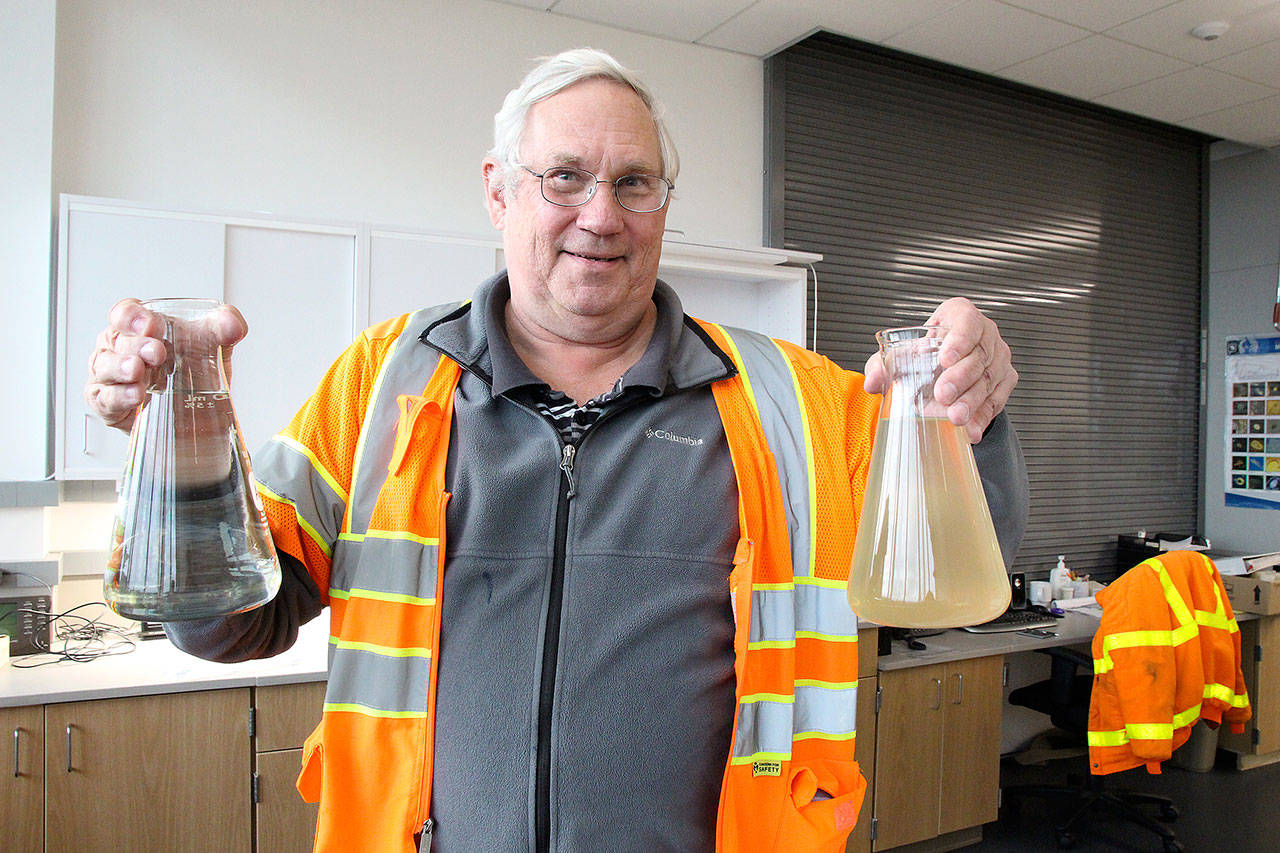Coupeville folks produce mighty fine sewage.
The people in charge of firing up Oak Harbor’s new, $142 million sewage treatment plant discovered this after they trucked in thousands of gallons of sludge from the town’s own treatment plant at the beginning of the week.
The malodorous liquid was fed into the city’s treatment plant and quickly jump-started the biological process that helps clean the wastewater by giving beneficial microbes something to eat.
“It’s actually growing really good,” said Brett Arvidson, project manager for the plant. “It’s good stuff.”
By Thursday, the treatment plant was up and running with 100 percent of the city’s sewage being fed through the state-of-the-art membrane bioreactor system, according to Arvidson. For now, the treated water is piped to the sewage lagoons on the Navy Seaplane Base, which had been treating the city’s sewage before this week.
“It’s a big moment for us,” Arvidson said. “We are operational.”
The system turns sewage into crystal-clean water. Two flasks in the on-site lab illustrate the difference between the treated water that comes from the new facility and the cloudy water produced by the lagoons.
Once the kinks in the complicated system are worked out and the 27 different computers work happily together, then the treated water will be released into Puget Sound directly through an outfall.
“This startup has been one of the best I’ve ever seen,” said Arvidson, who’s spent a career building sewage treatment plants.
The success will be celebrated at a grand opening planned for 1:30 p.m. on Nov. 29.
The plant is made up of a campus of buildings set on the edge of the waterfront Windjammer Park. It’s been a long haul for those who worked to get the plant built.
The process was complicated, complex and controversial, but ultimately successful.
Since the process is computerized, only seven people will work at the plant. The entire plant can be controlled by a few computers at the control center or, hypothetically, from a laptop on a beach in Barbados.
The treatment is a series of steps, from screening of the raw sewage to a biological process in aeration tanks to microfiltration in the fancy membranes.
At one point the stuff becomes what’s known as “mixed liquor,” Arvidson said, noting that there’s a lot of food-related terms in the sewage world.
The water is hit with ultraviolet light, which disinfects it, before being released into the wild.
The solids end up being dried and carted off; the stuff is “high-class biosolids” that can be used as a low-grade fertilizer in people’s yards, Arvidson said.



